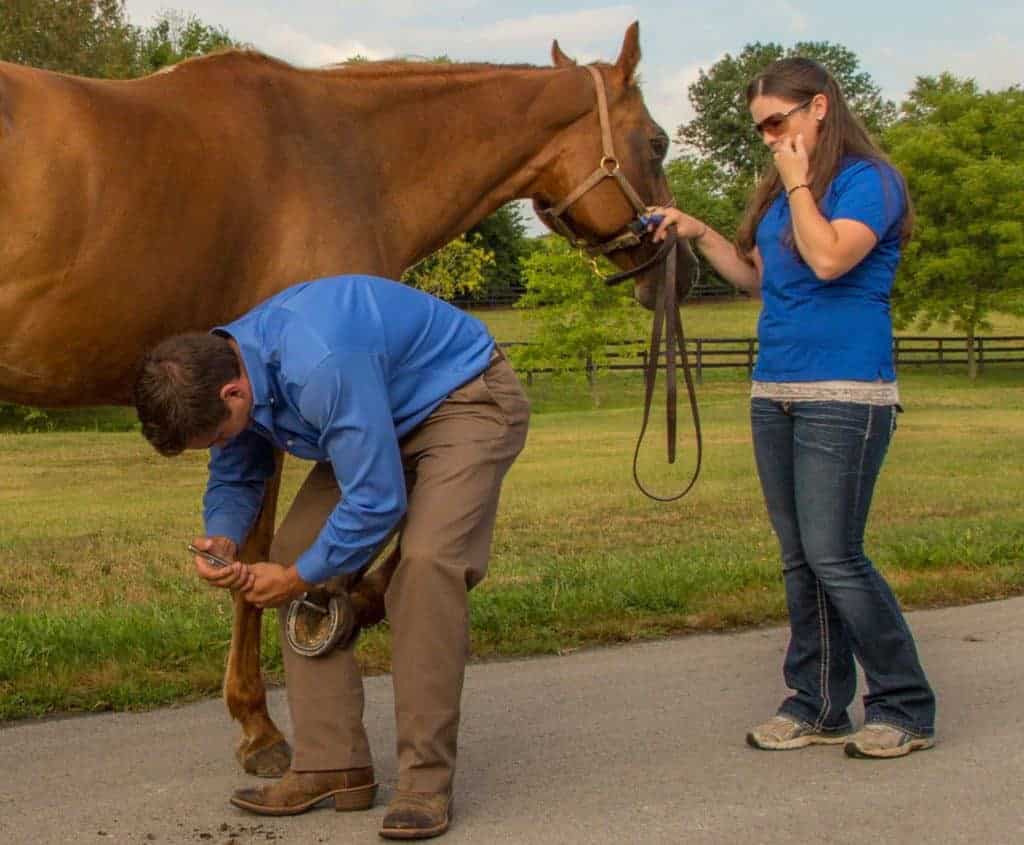
Understanding and Managing Quarter Cracks in Horses
An equine veterinarian describes why uneven pressure on the hoof can cause quarter cracks and how farriers can manage them using corrective trimming and shoeing.

An equine veterinarian describes why uneven pressure on the hoof can cause quarter cracks and how farriers can manage them using corrective trimming and shoeing.

Two hoof care experts answer questions about common hoof issues including subsolar abscesses, bruises, thrush, and more. Read more in The Horse‘s Winter 2024 issue!

Even horses with less-than-ideal feet can lead sound and productive careers.

Can a horse go lame because of extreme hoof cracks and not being trimmed regularly?

How soon can I ride my horse after he gets trimmed or shod? How do I know if he has thin soles? Vets and farriers answer these common hoof health questions and more.

Overly moist, dry and brittle hooves tend to break and bruise, leaving horses footsore or causing issues with shoe retention. Here are tips for hardening hooves.

Quarter cracks form in response to various hoof imbalances and often require a multimodal approach to resolve.

Find out what hoof problems you can safely manage yourself and when to call in your farrier and/or veterinarian.

Whether big or small, these hoof wall imperfections require prompt repair and stabilization.

The 11th NEAEP symposium emphasized farriers and veterinarians working together for the good of the horse. Read our in-depth coverage in this free report, sponsored by Soft-Ride.

Dissections showing underlying bone loss can help hoof care professionals know how to manage different types of hoof capsule damage.

Your horse’s feet are his foundation. What does a healthy hoof look like? Does your horse need shoes, or is he fine barefoot? And what about hoof boots? Learn how to work with your farrier (or trimmer) and veterinarian to ensure your horse’s feet receive the right care.

Why does a horse’s hooves grow faster than his stablemates’ that are on the same diet and exercise schedule? A veterinarian who’s also a farrier shares his thoughts.

Multiple hoof-related factors can affect a horse’s performance—including balance, trim, shoes, pads, support materials, and more. Here’s how farriers can help a horse reach his potential.

Anecdotally, we know that hoof anatomy influences horse soundness and movement, but researchers are working to put science behind that relationship. Here’s what they’ve learned so far.

A systematic approach to examining the equine foot can help veterinarians identify causes of lameness more quickly and accurately.
Stay on top of the most recent Horse Health news with
"*" indicates required fields